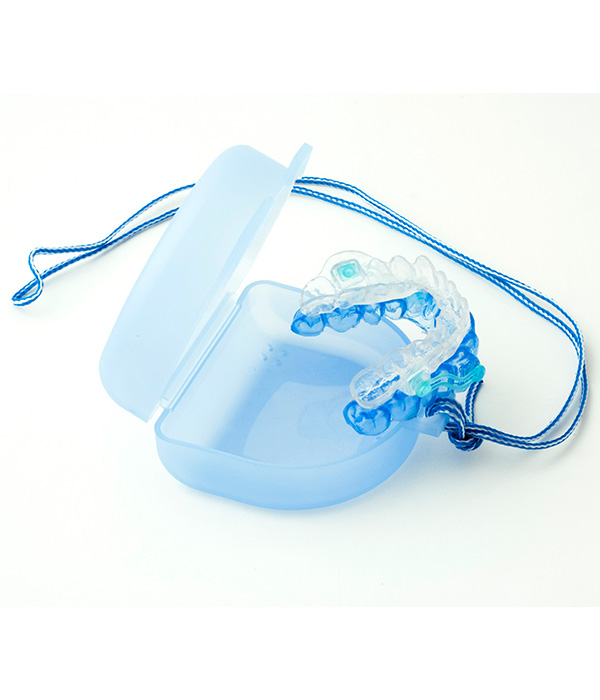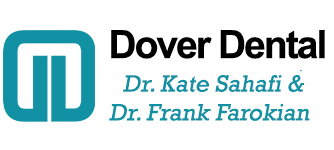Snoring
What Causes Snoring?
Snoring occurs when the soft tissue structures of the upper airway collapse onto themselves and vibrate against each other as we attempt to move air through them. This produces the sound we know as snoring. Large tonsils, a long soft palate, a large tongue, the uvula, and excess fat deposits in the throat all contribute to airway narrowing and snoring. Usually, the more narrow the airway space, the louder or more habitual the snoring.

Obstructive Sleep Apnea
Obstructive Sleep Apnea (OSA) occurs when the tongue and soft palate collapse onto the back of the throat. This blocks the upper airway, causing airflow to stop. When the oxygen level drops low enough, the brain moves out of deep sleep and the individual partially awakens. The airway then contracts and opens, causing the obstruction in the throat to clear. The flow of air starts again, usually with a loud gasp. When the airflow starts again, you then move back into a deep sleep. The airway muscles collapse, as you awaken with a gasp. The airway clears once again as the process repeats itself. This scenario may occur many times during the night. The combination of low oxygen levels and fragmented sleep are the major contributors to most of the ill effects that sleep apnea patient suffers. In addition to excessive daytime sleepiness, studies show that sleep apnea patients are much more likely to suffer from heart problems (heart attack, congestive heart failure, hypertension), and strokes, as well as having a higher incidence of work-related and driving-related accidents.
How Do You Know If You Have OSA?
Take a simple test but be sure to talk to Dr. Sahafi if you think you have a problem.
Diagnosis of Obstructive Sleep Apnea
Since OSA is a serious medical condition, it must be diagnosed by a physician. Diagnosis is based on the results of an overnight sleep study, called a Polysomnogram (PSG). Other factors in determining OSA are patient evaluation and history.
Treatment Options
Good sleep hygiene, weight loss, and exercise are some helpful OSA treatments a patient can practice on their own. However, medical and dental treatments include Continuous Positive Airway Pressure, Oral Appliance Therapy, and surgery.
Continuous Positive Airway Pressure (CPAP)
Continuous Positive Airway Pressure (CPAP) is pressurized air generated from a bedside machine. The air is delivered through a tube, connected to a mask, covering the nose. The force of the pressurized air splints the airway open. The CPAP opens the airway like air into a balloon; when air is blown into the balloon, it opens and gets wider. This is exactly how CPAP clears the airway.

Oral Appliance Therapy
Oral appliances are worn in the mouth to treat snoring and OSA. These devices are similar to orthodontic retainers or sports mouthguards. Oral Appliance Therapy involves the selection, design, fitting, and use of a custom-designed oral appliance that is worn during sleep. This appliance then attempts to maintain an opened, unobstructed airway in the throat. There are many different oral appliances available. Approximately 40 appliances have been approved through the FDA for the treatment of snoring and/or Sleep Apnea. Oral appliances may be used alone or in combination with other means of treating OSA. These means include general health, weight management, surgery, or CPAP. Oral appliances work in several ways:
- Repositioning the lower jaw, tongue, soft palate, and uvula
- Stabilizing the lower jaw and tongue
- Increasing the muscle tone of the tongue
Dentists with training in Oral Appliance Therapy are familiar with the various designs of appliances. They can determine which one is best suited for your specific needs. The dentist will work with your physician as part of the medical team in your diagnosis, treatment, and ongoing care. Determination of proper therapy can only be made by joint consultation with your dentist and physician. Initiation of oral appliance therapy can take from several weeks to several months to complete. Your dentist will continue to monitor your treatment and evaluate the response of your teeth and jaws.
Surgical Procedures
In addition to Oral Appliance Therapy, dentists who are oral and maxillofacial surgeons may consider a variety of methods to evaluate, diagnose and treat upper airway obstruction. These dental specialists treat upper airway obstructive disorders by utilizing both minimally invasive procedures as well as more complex surgery, including jaw advancement. Additionally, an ENT specialist may evaluate you for other types of surgery, mainly the removal of the excess tissues in the throat. It may be necessary to remove tonsils and adenoids (especially in children), the uvula, or even parts of the soft palate and the throat.
